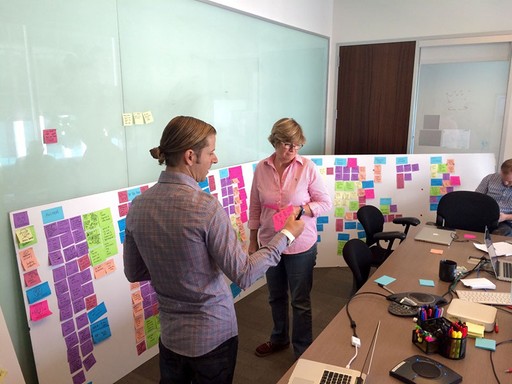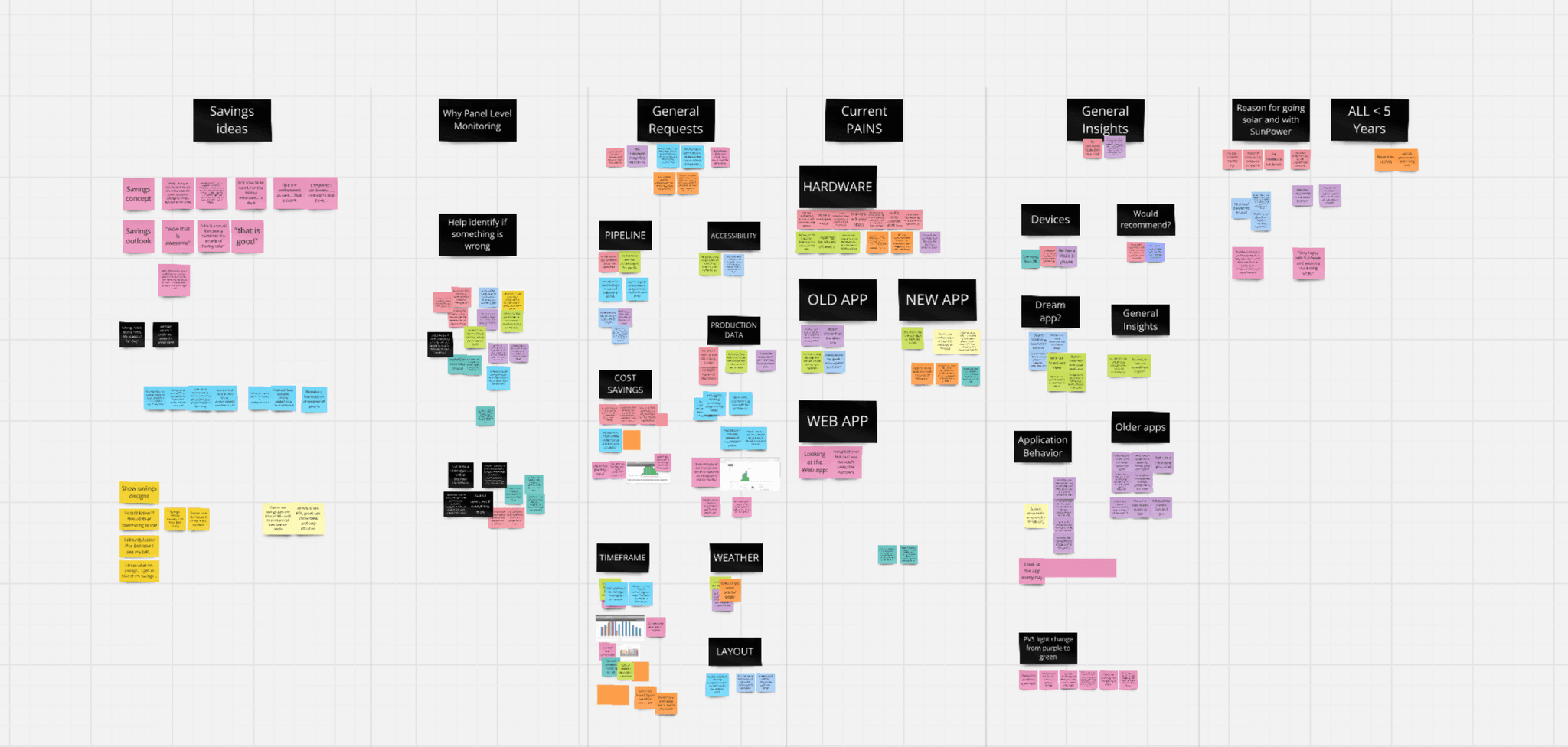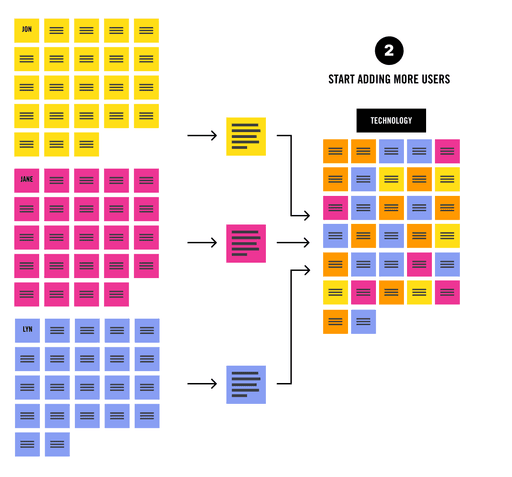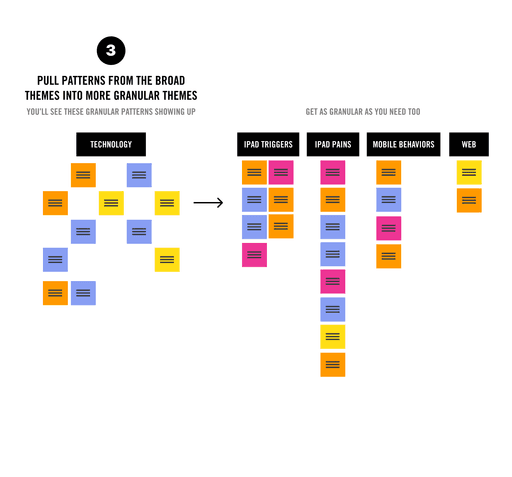RESEARCH AFFINITY MAPPING
Clustering Information
Organizing and preparing information in a systematic way. Clustering
patterns and themes help us to identify points of interest, priority, important observations/learnings/findings, and validations or invalidations.




After Many Interviews
You should have different color (one for each interviewee) user buckets:

How many interviews should you do before clustering (affinity mapping)?
Best practice is to have at least 5-7 completed to start seeing some patterns
Don't see patterns or need more data points? Keep interviewing & double check you're asking the right questions
Clustering Themes
Start with one user, do this with your team & go through each insight, read out load and decided as a group what "theme" this insight should go under. At this point, not everything needs to go into a theme, start separating what is a note vs insight and if you don't know just create a theme called "parking lot" and place the unknown sticky notes under the parking lot to review at the end.

After one user, start adding more users into categories.
You may need to add more topics as you start going through more users

Breakdown the broad categories into more granular themes
You can wait at the end to do this or while you're reviewing the rest of the users

Summarize your themes
Writing summaries forces us to articulate lots information into into more digestible understandings which makes it easy for others to review and allows to share out faster as well. These summaries also help us create learnings, problem statements, validations and decisions going forward.
Summaries should help capture:
• Decisions on what problems we're going to focus on and why
• Decisions on what problems we're NOT going to focus on and why
• Findings that inform learning goals
• Validations/invalidation about the assumption we made
• Information to create a persona or empathy maps

Example:
The "Outlined Rectangles at the top" are the themes

Revisit your learning goals, questions, assumptions & package everything up
Package everything into one document and tie the information back to our learning goals & assumptions that we started with—connect the dots.
Include the following
• Learning goals
• Summaries - this is where you can call out more about what we learned
• Assumptions validated or invalidated (include quotes)
• Pain-points identified - you can write problem statements here as well (include quotes)
• Additional comments & notes going forward
• Severity rating scale- used to scale the pain-points to help inform priority
Example:

Happy Clustering :)